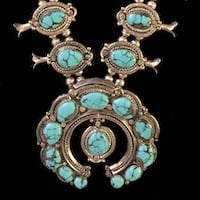Traditional Turquoise Jewelry Styles
People have prized turquoise jewelry for millennia. Learn about these traditional turquoise designs that still influence modern artisans.
9 Minute Read
Ancient Egyptian Turquoise Jewelry
The earliest documented use of turquoise jewelry comes from Ancient Egypt. The Egyptians sourced most of their turquoise from the southwest Sinai region, particularly Serabit el-Khadim and Wadi Maghara. The Egyptians associated turquoise with fertility and plant life. For them, it was a luxury item that brought joy to people, and they made good use of their limited supply.
Beads, Amulets, and Inlays
Ancient Egyptian artisans worked turquoise in ways we still employ today. For example, they carved beads from it for bracelets and elaborate collar necklaces.
Emily Frontiere
Emily Frontiere is a GIA Graduate Gemologist. She is particularly experienced working with estate/antique jewelry.
International Gem Society
Related Articles
Turquoise Value, Price, and Jewelry Information
Destructive Gemstone Tests: Dye Testing
Turquoise Care Guide
How Do Turquoises Form?
Latest Articles
800 Years of Mogok: A Celebration in Tenuous Times
What is the Average Gemstone Faceting Yield?
Pyroxmangite Value, Price, and Jewelry Information
How to Identify Emerald Simulants and Synthetics
Never Stop Learning
When you join the IGS community, you get trusted diamond & gemstone information when you need it.
Get Gemology Insights
Get started with the International Gem Society’s free guide to gemstone identification. Join our weekly newsletter & get a free copy of the Gem ID Checklist!
